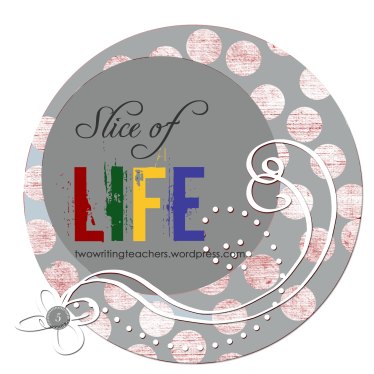Our literacy block is 150 minutes long. You'd think that would be plenty of time for first graders to read, write, learn about words, and talk together about literacy. However, it is amazing how easily that time can slip away. That's without even considering the interruptions of fire drills, a tooth that has fallen out, announcements over the intercom, assemblies we must attend, a late arrival, or those other little interruptions that can take time off the clock.
Sometimes in the rush to make sure we have time for Reader's Workshop, Writer's Workshop, and word study, it is easy to forget the power of keeping learning conversational. Keeping the learning across our day conversational means thinking not only about the point of my teaching, but also about the responses of the children in our conversation. Watching their body language, thinking along with them, and responding genuinely to their comments is what makes the workshop a perfect place to learn.
Conversations in Conferring
Writer's workshop is one of the places where I really try to be sure I keep the learning conversational. Over the years I've tried to learn to "teach the writer not the writing". Taking careful notes for each writer, considering writing over time, and considering the focus of our study help me to do this. In the rush to keep conferences short, I sometimes have to remind myself that this is a conversation about learning. I use a flexible structure during these conversations:
Listen: First I talk with the writer about their current work. Sometimes I ask, "What are you working on?", "How's it going?" (thanks, Carl Anderson) or comment "I've noticed you've been really working on this piece. I can't wait to hear about it.". Then I usually ask students to read their story to me. While I am thinking about what is next for this writer during this time, I am focused on the meaning of their story. To begin I keep my conversation about the story responding genuinely to their message. During this time I try to be sure the child is in charge of the conversation.
Reflect: After listening to the story, I try to take a moment to consider what is next for this writer. Often I come to the conference with a possible focus that has evolved from previous conversations, the child's own goals for writing, and/or the learning we are doing about writing in our classroom. I try not to get drawn into little problems with a particular piece that are not consistent challenges for the writer. I also try not to get caught up in challenges with conventions that can be solved editing later in the piece. This is a conversation about the writer.
Teach: During this time I have a conversation about the writer about what is next. Sometimes that means talking further about the goals the writer has set for himself/herself. We look for places in the writing where he/she may be accomplishing this and places where maybe we can work on this. Sometimes I make a teaching point with the writer that is closely related to our focus lessons. It is easy to get caught up in looking for what is wrong with the writing, but I actually find it more powerful to look for what is right. Finding what is working for young writers, and naming it for them, usually is a much more powerful way to make shifts in learning. I try to stick to one point here and only one point. I don't want to take the child away from his/her focus or spend too long in one place.
Plan: This summer I talked with a group about
Patrick Allen's book,
Conferring. Though his book is more about conferring in Reader's Workshop, conferring in Writer's Workshop is the same. One of the biggest ah-has I took away was the importance of being clear about the plan as we exit. Here the conversation is about what is next. What does all this talking we've been doing mean to the writer? Again, I like the student to control most of this conversation. I genuinely want to know what they plan to do next.
I enjoy making time in our day for these small conversations with young writers. I learn so much from them every day and find the work they do inspiring.
Here are a few previous posts about talking with learners:
Discovering What Kids Know
Conferring Ain't Easy
Conferring: Improving Conversations with Readers
The Conversation Begins




